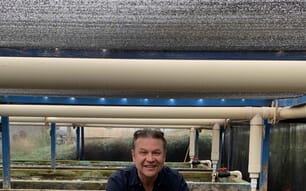The hatchery expansion incorporates significant advances in aquaculture technology developed by the Company with support from the National Science Foundation (NSF), including methods for the control of the limpet reproductive cycle and systems for intensive propagation of the complex larval stages.
While estimates put the current total population of Megathura crenulata in the ocean available for commercial exploitation at less than 100,000 animals, this new facility has a spawning capacity of two million larvae and is designed to produce 50,000 juvenile limpets per year for Stellar.
This expansion will increase the Stellar's future KLH production capacity to in excess of 20,000 grams of KLH annually. Stellar estimates total current worldwide KLH usage at approximately 2,000 grams per year.
The Company's CEO, Frank Oakes, said: "This represents a major milestone in the Company's plan to provide a stable and scalable worldwide supply of KLH to support the commercialisation of multiple KLH conjugate vaccines, as well as diagnostic and potential novel therapeutic products. While other KLH suppliers are planning for gram quantities of KLH to support preclinical research, and clinical vaccine development, Stellar is now capable of producing kilogram quantities of KLH to support all successful KLH platforms with GMP and non-GMP grade KLH as required by our customers."
Brandon Lincicum, Stellar's Aquaculture Manager, said: "It is very exciting to see the results of several years of intensive research supported by our NSF-SBIR grant translated into the world's first, fully-integrated keyhole limpet hatchery system with state-of-the-art technology and a dedicated team of well-trained, professional aquaculturists capable of supporting the large-scale commercial production that will be required by any vaccine developer that gets an approved product to the market."
Californian Limpet Hatchery Expanded
US - Stellar Biotechnologies has completed a major expansion of its keyhole limpet hatchery facility in Port Hueneme, California, in anticipation of increases in demand for its keyhole limpet hemocyanin (KLH) products.
by Lucy Towers


